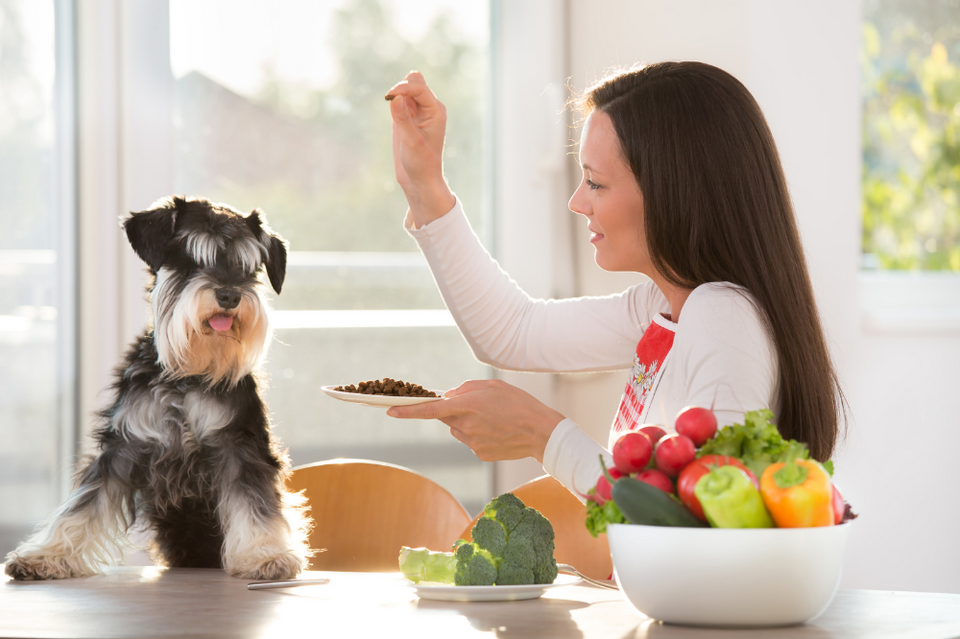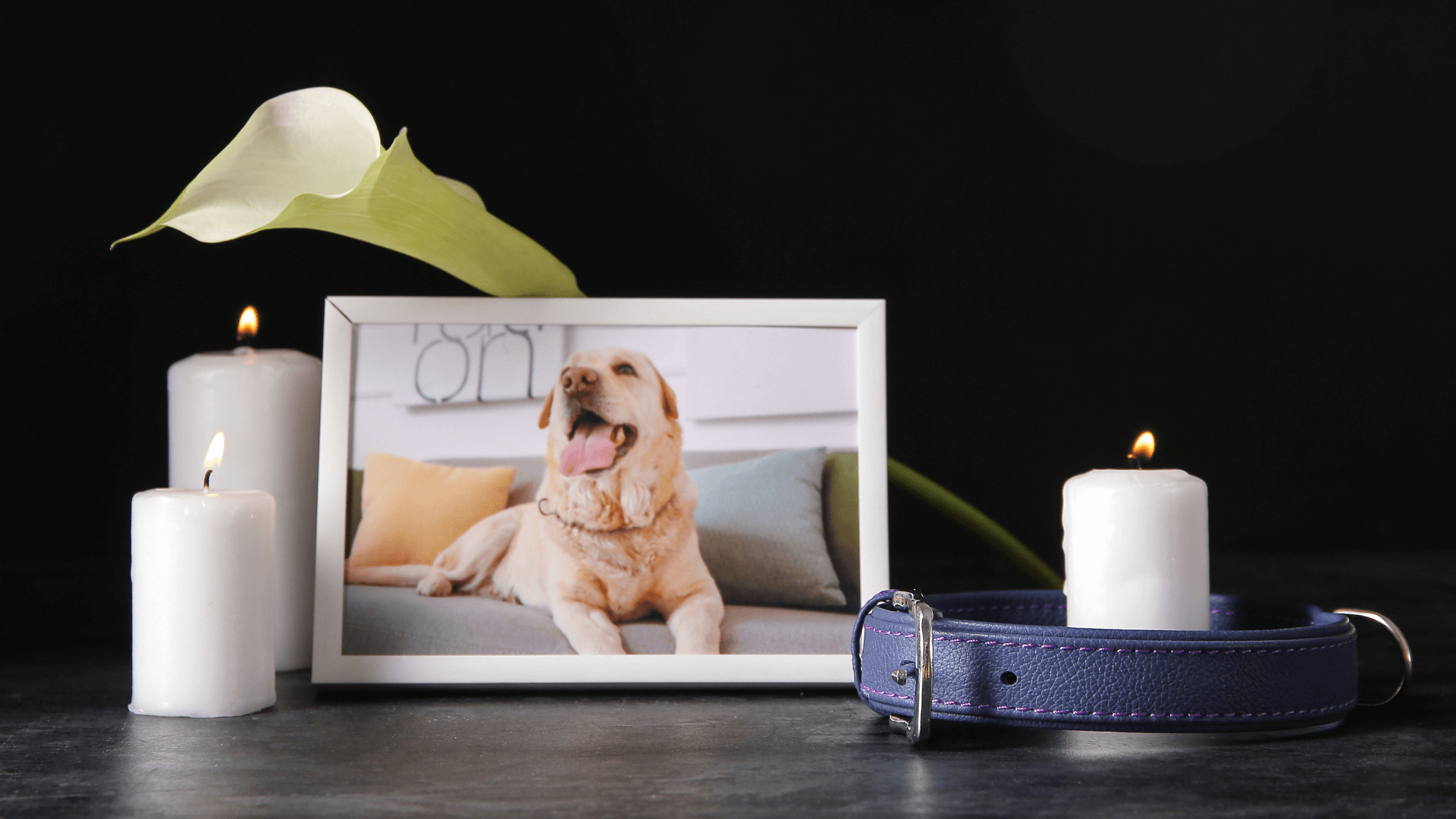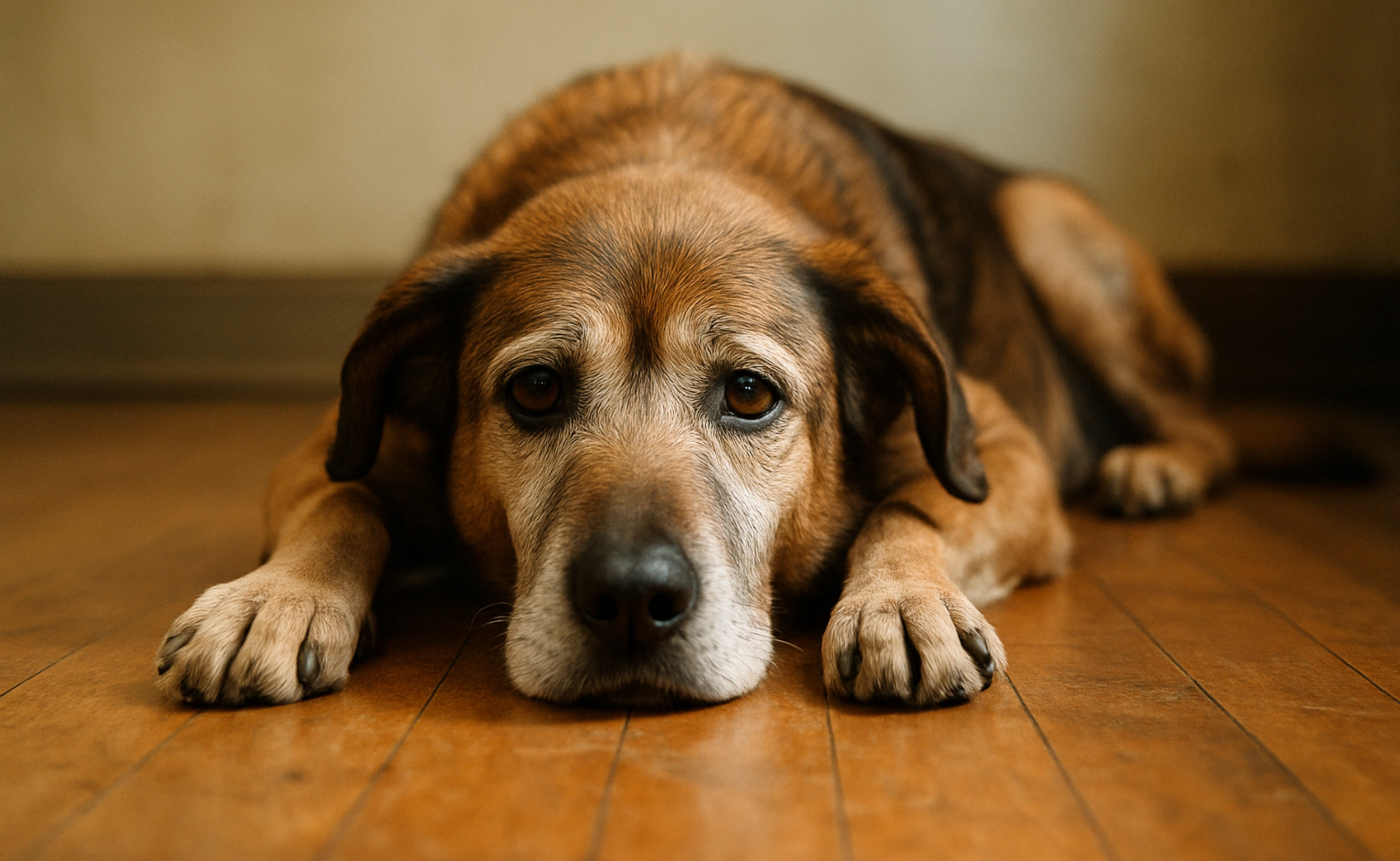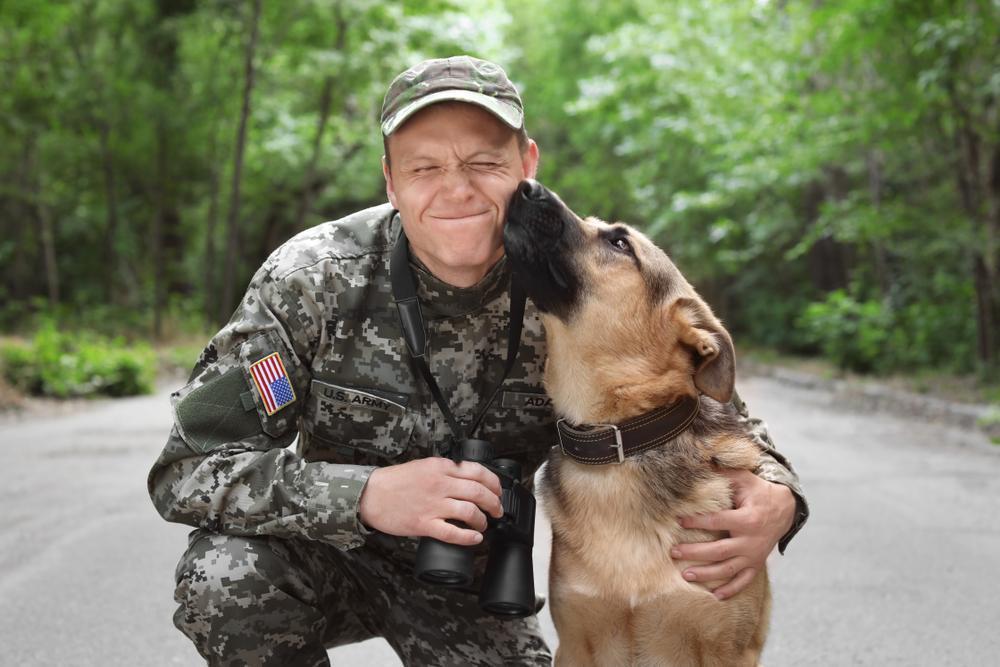
I'm on a diet. Should my pet be on one too?

If you’re like most humans, one of your top New Year’s Resolutions this year and every year is to diet, exercise, and lose weight, although most people give up those resolutions six weeks into the year, or right around Valentine’s Day.
Must be all those human treats — aka candy — flying around at that time, and they can be hard to resist.
But you may wonder: “If I go on a diet, should my pet do the same?”
Well, if you have a dog and you’re in America, the answer is... they probably should, whether you’re on a diet or not. Obesity in dogs is quite common, with a rate of 25-30% in general, and 40-45% in senior dogs over five years old.
Cats don’t do much better, by the way. The obesity rate in their general population is 30-35%, and in the feline seniors, 50%. Hmm. Maybe that’s where the expression “fat cats” came from.
Of course, people aren’t doing much better. Our obesity rate is 42.4% overall, so that means that humans of all ages are as overweight as senior dogs.
How can I lose weight?
How does weight gain happen? Simple. Eat too much, don’t move enough. The only diet that actually works isn’t a fad, it’s the truth: Eat less, move more.
Good luck, humans, because you have to rely on your own willpower. But there’s good news for your pets. You can take advantage of their evolution to help them eat less — and walk those dogs a lot to help them and you move more.
Given unlimited food, a dog will keep on eating it without stopping, and this has been programmed into them genetically. It comes from their wolf ancestors, and there’s a very simple reason for it.
A wolf pack in the wild does not eat every day. In fact, a few days may pass between feasts. It all depends on how often they are successful in the hunt, and whether they manage to bring down prey big enough to feed that pack.
Consequently, any time there is a successful hunt, then it’s a feeding frenzy, with the dominant wolves going first, and then the rest of the family following. They do this in order to sustain themselves until the next successful hunt, which could be later that day, or tomorrow, or three days from now or... whenever. Think “feast or famine.”
Imagine how voracious you’d be if you had to rely on a delivery driver bringing you varying amounts of food on a totally random schedule. If it’s been three days of eating nothing since that kale salad and sparkling water, you might be tempted to wolf down those three T-bone steaks, a bucket of mashed potatoes, a loaf of garlic bread, three sides of mac and cheese, and three chocolate lava cakes topped with chocolate ice cream, and go into a food coma.
Or, well, maybe an actual coma.
All right, you’re human, you might figure out that you can stick the extras in the fridge or freezer and have them on subsequent days, but your dog would not.
Well, at least not until you short-circuit that programming, and that is why turning feeding time into a ritual is so important.
The importance of ritual
So, what is a ritual? It’s a thing that is done in the same way, usually on a regular schedule, every single time. Humans have tons of rituals. If you attend any kind of religious services, every single one is a ritual.
But it also applies to secular things. Every American sportsball game is a ritual, for example, with their rules and regulations. So are graduation ceremonies, weddings both civil and religious, the swearing in to all political offices, every last courtroom procedure, and even most forms of entertainment.
Why are rituals so important to humans? Because they divorce us from our primate roots and natural instincts, and they can serve exactly the same purpose in separating dogs from their lupine instincts.
Help your dog lose weight

If you want to reduce overeating, control your dog’s portions, and help him or her lose weight, then make meal-time a ritual. By making it consistent in both timing and how it happens, you will be creating a specific ceremony for your dog, and once you’ve made that routine, they will lose any of that “OMG, when do I get to eat again?” instinct that came from their wolfie roots.
Here are the three key elements to creating a feeding ritual:
- Consistency of time. If your dog learns to know that they will get fed at the same times every day, they will be a lot less anxious.
- Consistency of action. If you are consistent in all the steps you go through in feeding — e.g., you make your dog sit and wait while you open the bags or cans and fill the bowl, then make them sit and wait while you set the bowl down with all that tempting food, but don’t let them eat until you say “Okay,” you’ve created a pattern of expectation and permission, and it ties the availability of food to you.
- Consistency of result: Your dog gets a filling meal (per your vet) every time, so she or he does not have to worry about feeling too hungry.
The key to it all is in creating recognizable patterns that repeat. Think about a baseball game. You know what’s going to happen from the moment you walk into the stadium. Humans find that predictability comforting. So do our pets.
In a nutshell, this is the way to help your dog lose weight. And while it might be a bit more of a struggle to do this with cats, it is possible if you can lock them out of the room where you dish up the food until you can seal the open containers, set down the bowls, then open the door and run!
Bottom line: Dogs thrive on routine. Give them a regular schedule, a safe bed to sleep in, a blankie to sleep with, and sweet dreams that come from knowing they don’t have to worry about where their next meal is coming from and... voilà! You will now have your perfect pet.
And about that diet you’re on? You could always make your dog your accountability buddy!
Share this article
written by


